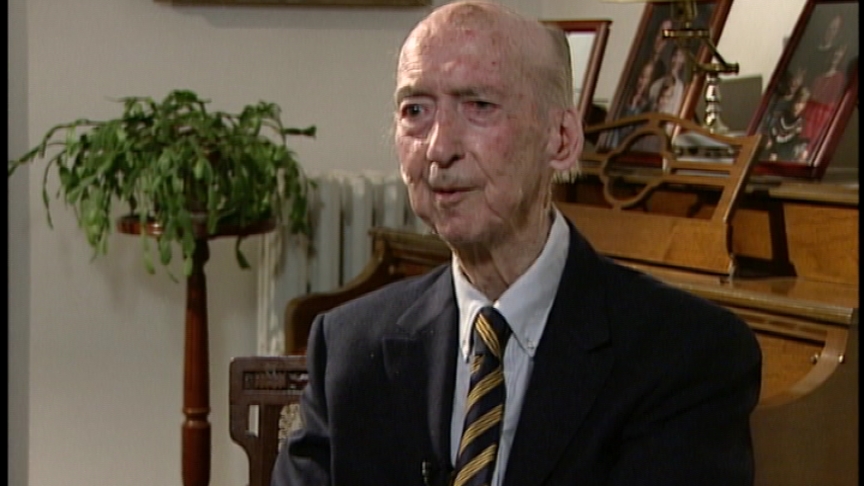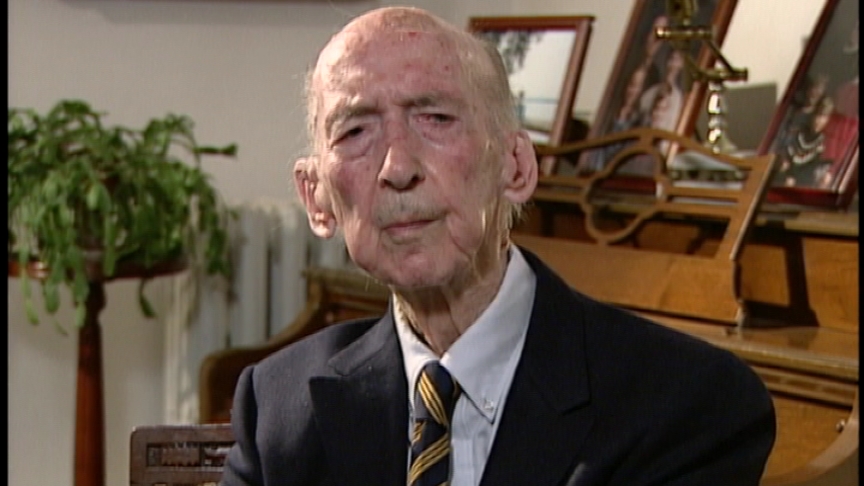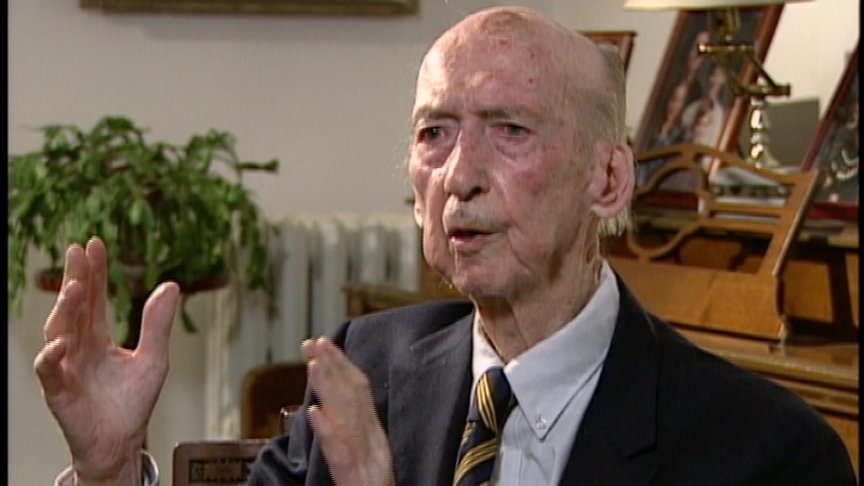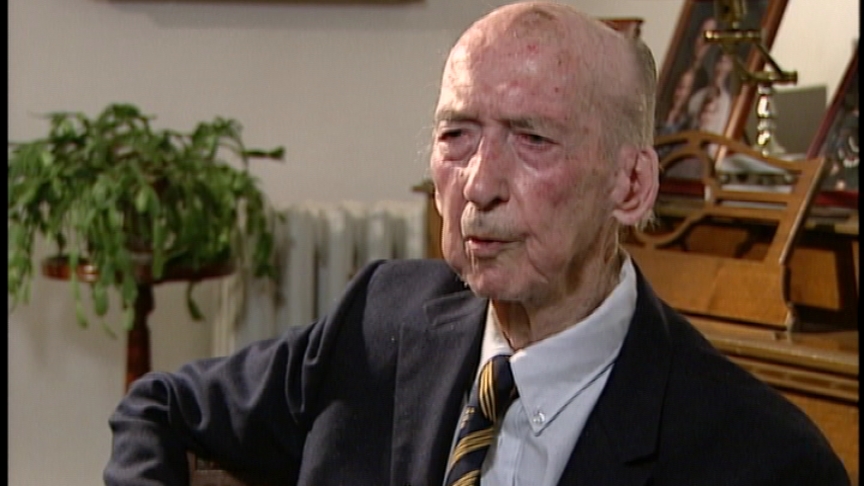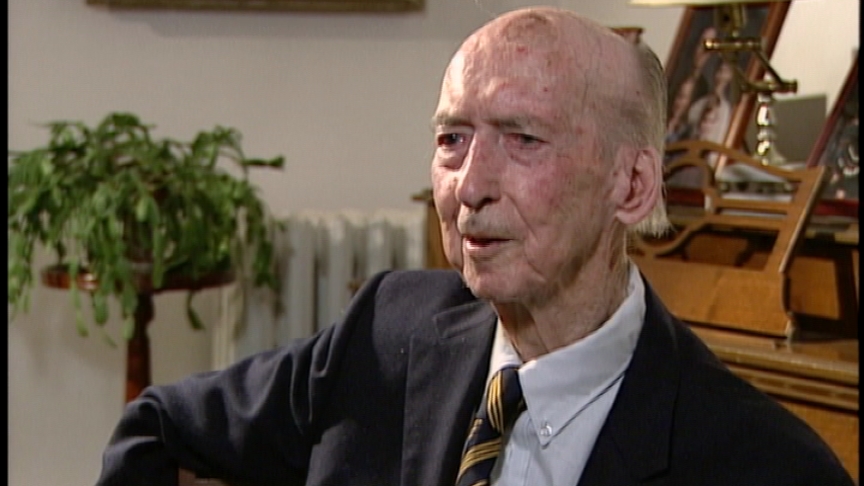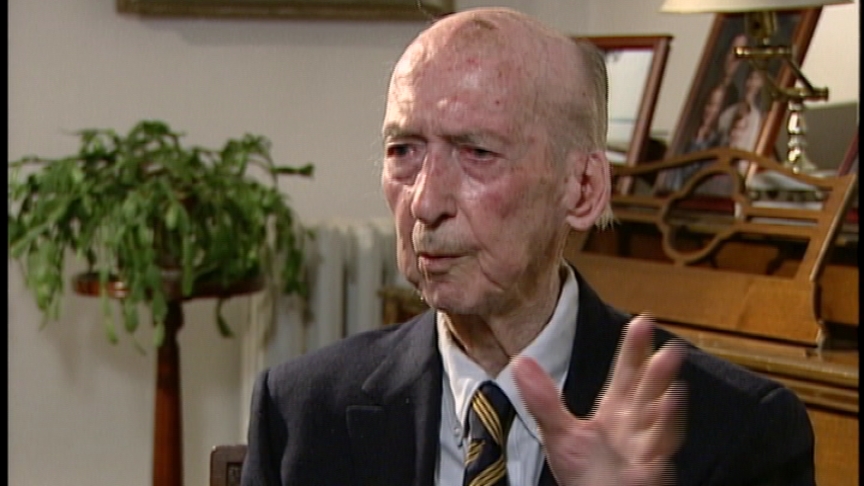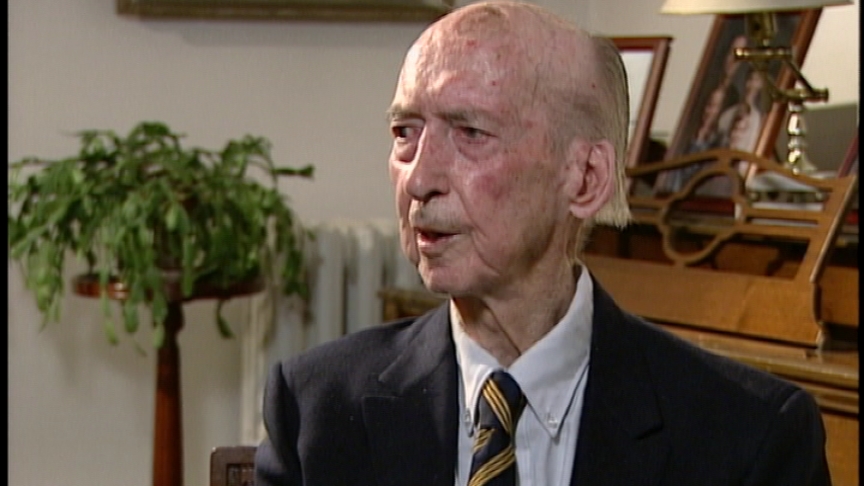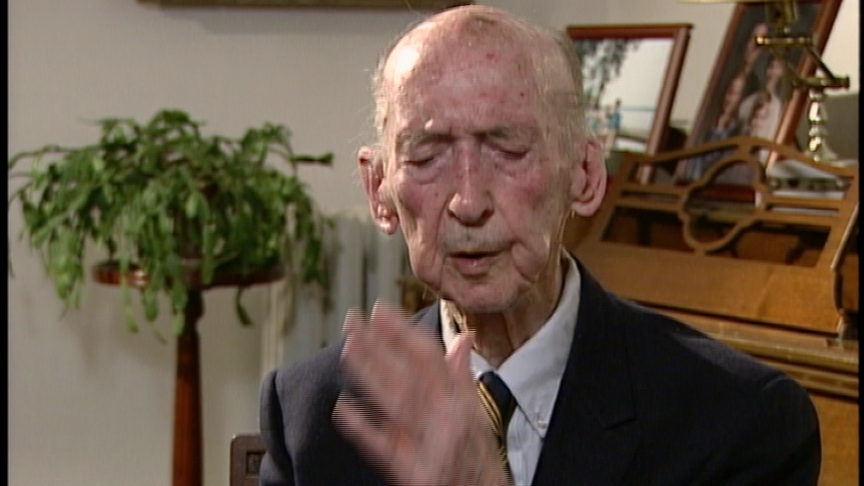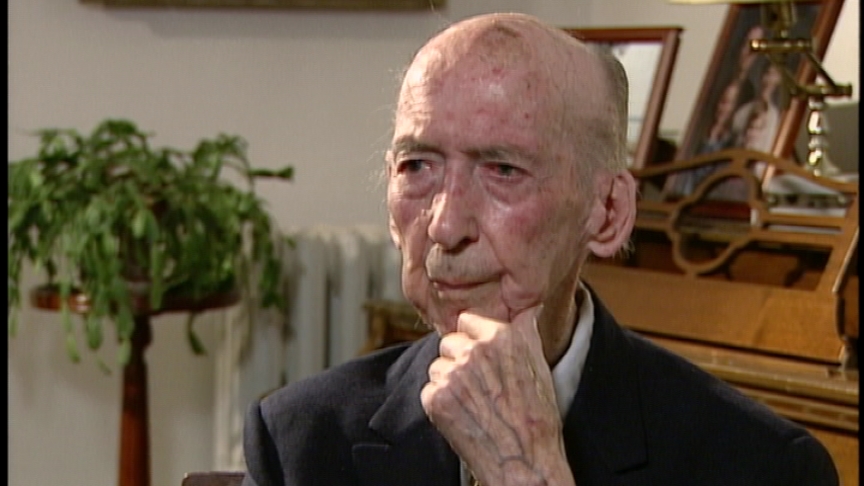Field Surgical Unit
Heroes Remember
Field Surgical Unit
Transcript
Description
Mr. Meiklejohn recalls being assigned to a field surgical unit, describing their purpose and how the medical units were grouped.
Dr. Robert Meiklejohn
Dr. Robert Meiklejohn was born in 1907, in Harriston, Ontario, and remained there throughout his youth, participating in cadets and the local militia. While attending medical school in England during the 1930s, Mr. Meiklejohn visited Germany. He returned from his visit certain war was imminent. Dr. Meiklejohn re-joined the militia upon his return to Canada, leading to quick enlistment upon Canada's declaration of war. Frustrated after almost a year of performing medical exams on troops, Dr. Meiklejohn transferred to the 16th Field Ambulance (whom he had been a militia member of) when it was activated, and was posted overseas. After arriving in England, Dr. Meiklejohn was posted to a newly created field surgical unit, a section of an advance surgical unit stationed within a few miles of the front lines, and posted to Italy. After losing their equipment when the ship was sunk during the journey, the unit was posted with British Forces for a few months before reuniting with Canadians. Following the Italian Campaign, Dr. Meiklejohn's unit was transferred to France to join Canadian troops heading into Holland. Dr. Meiklejohn finished his service in Holland bringing relief to the starving population. He returned to Canada soon after VE Day.
Meta Data
- Medium:
- Video
- Owner:
- Veterans Affairs Canada
- Duration:
- 5:18
- Person Interviewed:
- Dr. Robert Meiklejohn
- War, Conflict or Mission:
- Second World War
- Location/Theatre:
- Italy
- Branch:
- Army
- Units/Ship:
- Royal Canadian Army Medical Corp / 4th Armoured Division
- Rank:
- Major
- Occupation:
- Physician
Related Videos
- Date modified:



